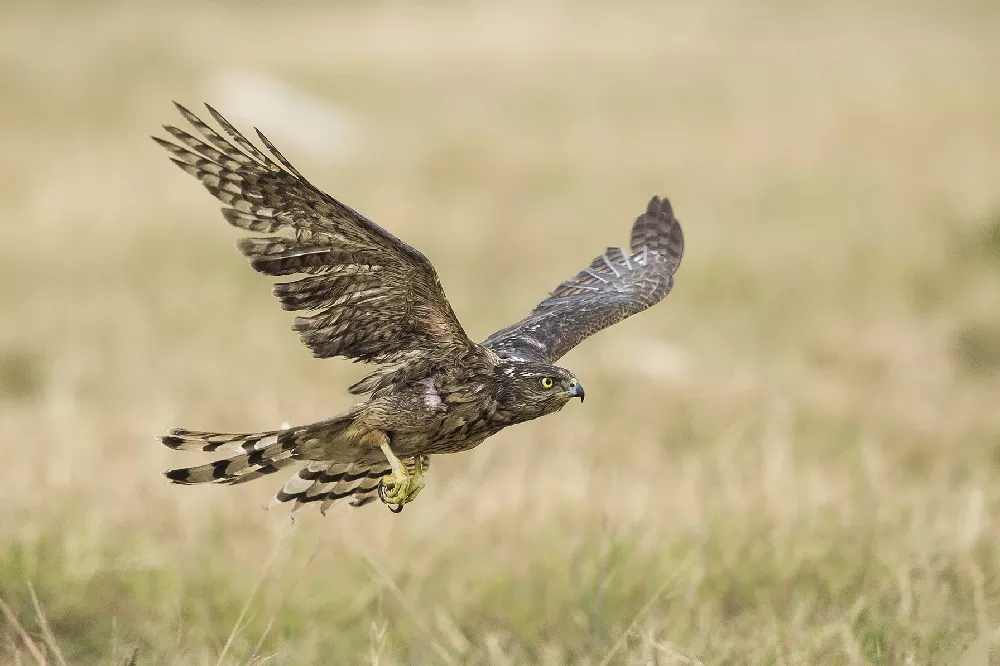The goshawk (Accipiter gentilis) is a formidable raptor renowned for its agility, speed, and stealth. Apart from its impressive hunting skills and striking appearance, the goshawk is also known for its distinct vocalizations. In this article, we will delve into the acoustic world of the goshawk, examining the sounds it produces and the significance of its vocal repertoire.
Vocalizations of the Goshawk:
Screeching Calls:
One of the most distinctive vocalizations of the goshawk is its screeching call. This call is typically loud, high-pitched, and piercing, often described as a sharp “klee-ee” or “ki-ee” sound. Goshawks employ this call during territorial displays, to establish their presence, or when agitated or alarmed.
Whistling and Whining Calls:
Goshawks also produce a variety of whistling and whining calls. These calls are characterized by a series of ascending and descending notes, creating a melodious and fluid sound. The whistling calls can vary in pitch and duration, often used in communication between mating pairs or during courtship displays.
Chattering Calls:
Goshawks emit rapid chattering calls, resembling a series of sharp and repetitive “kek-kek-kek” or “kik-kik-kik” sounds. These chattering calls are commonly heard during aggressive encounters or when defending their nests from intruders. The intensity and speed of the chattering calls may escalate depending on the level of perceived threat.
Alarm Calls:
Similar to many bird species, goshawks have alarm calls that are emitted when they sense potential danger. These alarm calls vary in tone and intensity but are generally short and loud, serving as an alert to nearby conspecifics or other wildlife. The alarm calls are an effective way for goshawks to communicate and warn of potential threats in their territory.
Juvenile Begging Calls:
During the breeding season, goshawk juveniles produce distinctive begging calls to communicate their need for food. These calls are often described as a repetitive, high-pitched screech, intended to attract the attention of their parents and elicit a feeding response.
Significance of Goshawk Vocalizations:
Goshawk vocalizations play a crucial role in their social interactions, communication, and territorial behavior. These calls serve as territorial markers, helping to establish and defend their boundaries. Vocalizations also facilitate pair bonding, courtship displays, and coordination between mated individuals. Additionally, vocalizations are used for parent-offspring communication and play a role in nest defense and predator deterrence.
Furthermore, goshawk vocalizations contribute to the acoustic environment of their habitat, allowing other wildlife and bird enthusiasts to identify their presence and recognize their behaviors. By studying and understanding goshawk vocalizations, researchers and birdwatchers can gain insights into their behavior, population dynamics, and breeding success.
Conclusion:
The vocalizations of the goshawk form an integral part of its behavioral repertoire and communication system. From screeching calls to whistling and chattering sounds, each vocalization serves a specific purpose, be it territorial defense, courtship, or alarm signaling. By appreciating and studying the acoustic profile of the goshawk, we can deepen our understanding of this magnificent raptor, further enhancing our connection to the natural world.


 Facebook
Facebook  Instagram
Instagram  Youtube
Youtube 